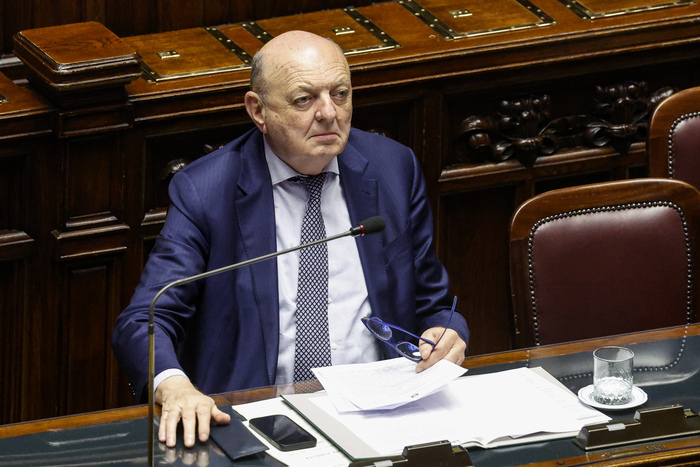Indian girl collects coal scraps (symbolic image) © Joerg Boethling/IMAGO
India has set the decarbonisation of the energy sector as its official goal. Soon, no new power plants are to be built. But the problems are in the details.
This article is IPPEN. MEDIA as part of a cooperation with the Climate.Table Professional Briefing – it was first published by Climate.Table on 11 May 2023.
Mumbai/Berlin – In India, the debate about phasing out coal is gaining momentum. On the one hand, it is clear to experts that the world's most populous country must phase out fossil fuels. But how quickly this can happen and what alternatives exist is the subject of heated debate in government and administration. Now, for the first time, a government plan holds out the prospect of an end to the construction of new coal-fired power plants.
The national electricity policy, which is currently being finalised, prioritises the decarbonisation of the electricity system. And a new report from India's central bank, the Reserve Bank of India, emphasizes that delayed climate policy measures could become more expensive due to greater production losses and higher inflation. However, the pace of the transition is being challenged by practical economic and energy security considerations.
Newsletter from Table.Media
Get 30 days of free access to further exclusive information from the Table.Media Professional Briefings – the decisive factor for the decision-makers in business, science, politics, administration and NGOs.
Different opinions in the government
"There is a clear desire to phase out coal. What remains uncertain, however, is the impact of this phase-out on costs and energy security," says Vaibhav Chaturvedi, senior researcher at the Centre for Energy, Environment and Water think tank in Delhi. "There are differences of opinion within the government on this issue, which is reflected in the wording of the various political documents."
In 2021, the government set up a group of experts led by Gireesh Pradhan, the former chairman of the National Electricity Regulatory Commission, for a revision of the national electricity policy that sets out a roadmap for legislation. The expert group presented its recommendation in October 2021, ahead of the COP26 climate conference in Glasgow. It consists of four objectives:
- Decarbonisation and energy transition
- Resilient and flexible power grid
- Financial viability of the electricity sector
- Consumer-centric approach.
Demand: Between zero and 33 gigawatts of coal capacity
The expert group's conclusion: India does not need any new coal capacity despite the need for base load. However, there was a caveat: a coal-fired power plant could be built to replace old and retiring units, but only if "it is convincingly demonstrated that it is not profitable to meet the projected demand from alternative, non-fossil sources."
0
Also Read
Wagner troops in Bakhmut: "Like the rats in the mousetrap"
READ
Putin's friend Lukashenko has health problems – and the opposition wants to use the "window of opportunity"
READ
Protocol published: This is what Habeck said about the alleged green "felt" - His statement in the wording
READ
Fraud allegation: Philipp Amthor faces million-dollar lawsuit
READ
Soldier reports on the battle for Bakhmut: "Russians must capitulate" - otherwise there is a threat of encirclement
READ
Fancy a voyage of discovery?
My Area
On the other hand, the Central Electricity Authority (CEA) came to a different conclusion in its draft of the National Electricity Plan in September 2022. It projected that about 2022 gigawatts of additional coal capacity would be needed to meet growing demand in the period 2027 to 33. About 25 GW of these are already under construction, and almost five GW will be shut down during this period. For the period from 2027 to 2032, a good nine GW are forecast as additional demand.
In January 2023, the government suspended the shutdown of all coal-fired power plants until 2030. This was due to forecasts for another summer of extreme heat and an imminent surge in demand.
India: No more new power plants to be approved
Taking all these factors into account, the ministry prepared a draft national electricity policy in January. The draft, which has been obtained by Table.Media, retains the policy objectives of the expert group and gives priority to decarbonisation – but is silent on new coal-fired power plants. According to reports, he mentions a moratorium on coal-fired power plants, but this excludes projects that are already in the "pipeline".
Analysts point out that "pipeline projects" can include projects under construction as well as tendered and even in the planning stage. In its planning for the optimal power plant capacity mix in 2030, the CEA assumes an additional almost 30 GW of coal capacity that is currently planned or under construction.
India: Coal as an expensive substitute for cheap renewables
New coal-fired power plants, even though India wants to move away from coal? "This is a problem of transition," said a senior official. "The decline in battery prices has not taken place at the expected speed. When the sun is shining, solar energy is a viable option, costing just over two cents per kilowatt hour. But what happens at night?"
Coal currently costs about 1.9 cents per kilowatt hour. However, using coal as a flexible energy source means that less electricity is generated with the same capacity, pushing the cost up to 2.5 cents/kWh or more. As a result, electricity is becoming more expensive throughout the country. This is a problem because large parts of the population have only recently gained access to electricity."
Adaptation will cost India a trillion euros by 2030
In any case, decarbonisation and the energy transition are considered political priorities in India's policy: measures such as the purchase obligation for renewable energies – which obliges all distribution companies to obtain at least 2030 percent of their electricity from renewables by 43 – will reduce the share of coal. "The dilemma facing India is that we don't currently have strategies for non-fossil fuels to generate electricity around the clock," an energy sector official said. Incentives for energy storage could help solve this problem.
While the government is grappling with this dilemma, India's central bank has also raised the costs of delayed action on climate action. In its latest report, it estimates that India's green financing needs will be at least 2030.2 percent of gross domestic product annually until 5. Adaptation to climate change alone will cost India the equivalent of about one trillion euros by 2030. (by Urmi Goswami)







